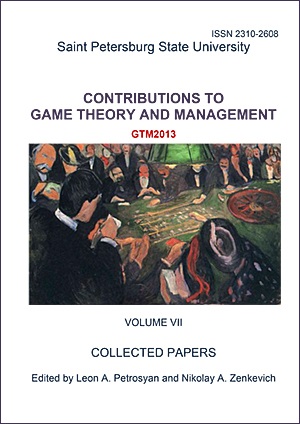The Nash Equilibrium in Multy-Product Inventory Model
Abstract
In this paper game theory model of inventory control of a set of products is treated. We consider model of price competition. We assume that each retailer can use single-product and multi-product ordering . Demand for goods which are in stock is constant and uniformly distributed for the period of planning. Retailers are considered as players in a game with two-level decision making process. At the higher level optimal solutions of retailers about selling prices for the non-substituted goods forming Nash equilibrium are based on optimal inventory solution (order quantity or cycle duration) as a reaction to chosen prices of the players. We describe the price competition in context of modified model of Bertrand. Thus at the lower level of the game each player chooses internal strategy as an optimal reaction to competitive player’s strategies which are called external. Optimal internal strategies are represented in analytical form. Theorems about conditions for existences of the Nash equilibrium in the game of price competition are proved.
Keywords:
game theory, non-coalition game, Bertrand oligopoly, Nash equilibrium, logistics
Downloads
References
Downloads
Published
How to Cite
Issue
Section
License
Articles of "Contributions to Game Theory and Management" are open access distributed under the terms of the License Agreement with Saint Petersburg State University, which permits to the authors unrestricted distribution and self-archiving free of charge.




